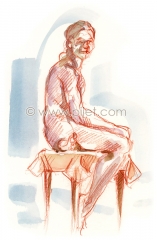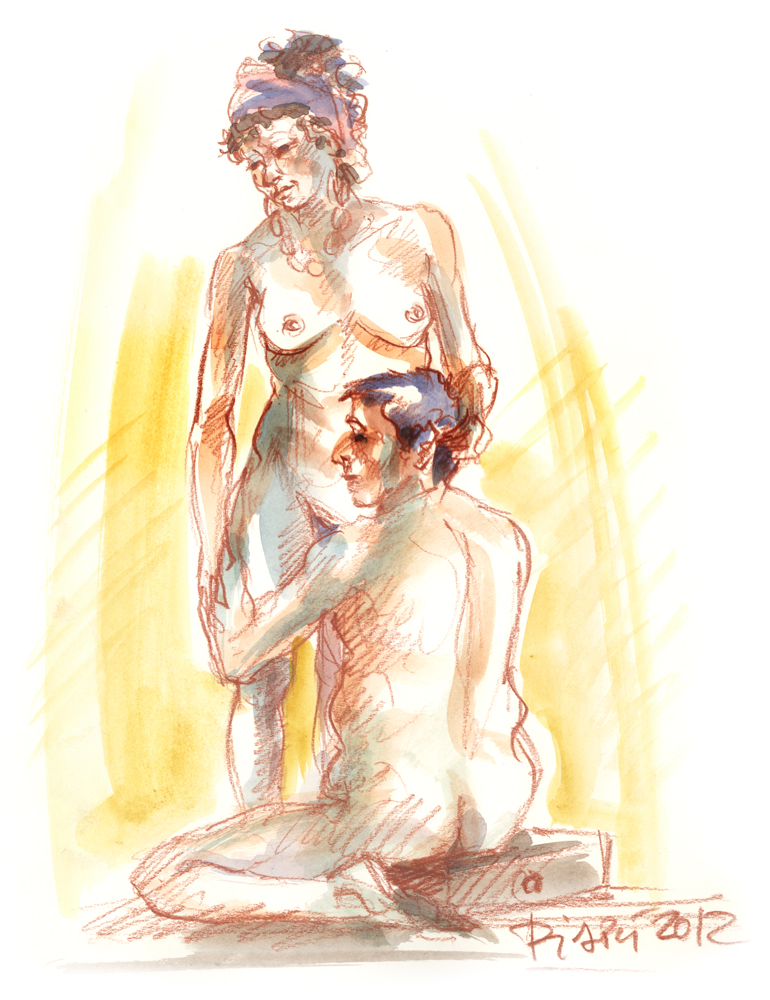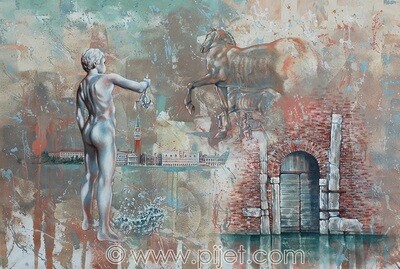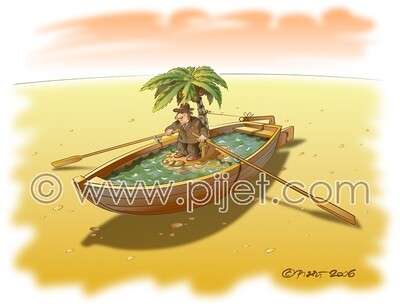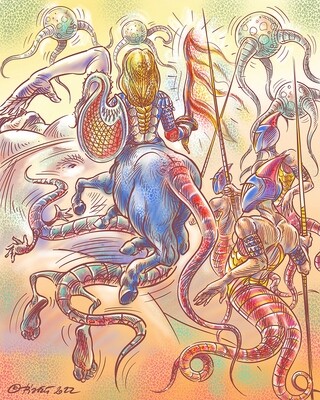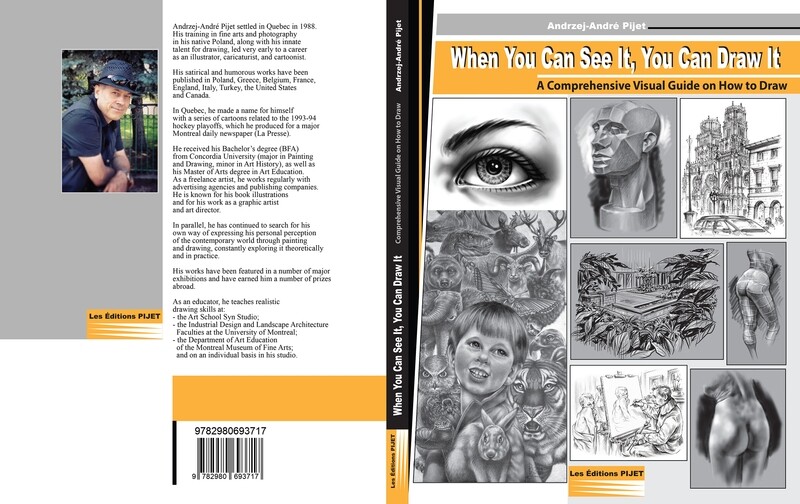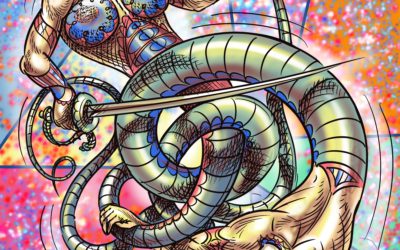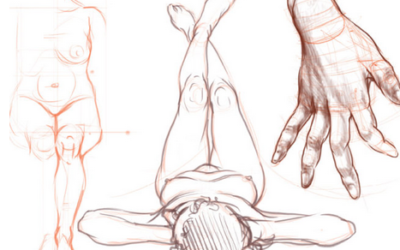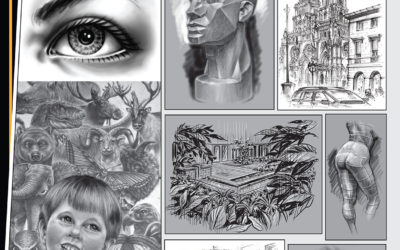This collection contains drawings from the series of quickly made sketches of a various subjects. I always have with me a sketchbook, and when possible I sketch what I see around. I use to draw the sanguine and watercolors. On occasion, I use other mediums too. The sketching pads are the traces of time I was able to catch in a visual form during my various displacements and activities. The notebooks pages register the data of my reflections and meditations through the art of drawing. It is a form of a spiritual journey. It is the best way for an artist to relax, because through the act of drawing one is entering a different space, a space of creative thought. When I draw, I concentrate all my senses on what I see. It is an intellectual research for a data from which I compose what I look at. The final artworks represent my personal perception of the reality surrounding me.
Marshall (2007), in her article, “Image as Insight: Visual Images in Practice-Based Research,” cites Gardner’s discourse on spatial intelligence, which perfectly illustrates the various segments of the drawing creation process:
Gardner (1983) states:
Spatial intelligence entails a number of loosely related capacities: the ability to recognize instances of the same element; the ability to transform or recognize a transformation of one element into another; the capacity to conjure up mental imagery and then to transform that imagery; the capacity to produce a graphic likeness of spatial information; and the like. (p. 176).
Graeme Sullivan (2010), in his most recent book “Art Practice as Research: Inquiry in Visual Arts,” contextualized the process of Visual Arts Practice as a field of academic research. Sullivan, in the triangular diagram he created, shows the interdependent actions, which take place during the Visual Arts Practice, and which reflects also the cognitive character of drawing creation. He depicted a profile of four essential activities, which constantly interact within each other’s territories of collected data in order to complete the visual outcome of the conducted research. The Visual Arts Practice (Creating) interacts with Interpretive Discourse (Reflecting), Empiricist Inquiry (Designing), and Critical Process (Critiquing) in order to summarize the entire operation of artwork construction. The specified elements do not reflect the linear accumulation of knowledge, but they interact within themselves without an order. What I mean by this is that the triangular sections do not always interact with the centrally situated triangle signifying the process of Creating. They also interact between themselves. The outcome of all these cognitive interdependent interactions results in the conclusive artifact, which in this case is the sketching. “In pursuing these kinds of quests artists cast their minds to issues, ideas, and experiences that reveal imaginative insights, yet the process resists capture by the freeze-frame of clinical analysis” (Sullivan, 2010, p. 152). The experiment of sketching in direct with “scientific” consciousness permits the realization that “knowledge is gained through the speculation, accumulation, analysis, and confirmation of facts, and the utility of empirical approaches,” which “remains the cornerstone of scientific inquiry” (Sullivan, 2010, p. 36).

